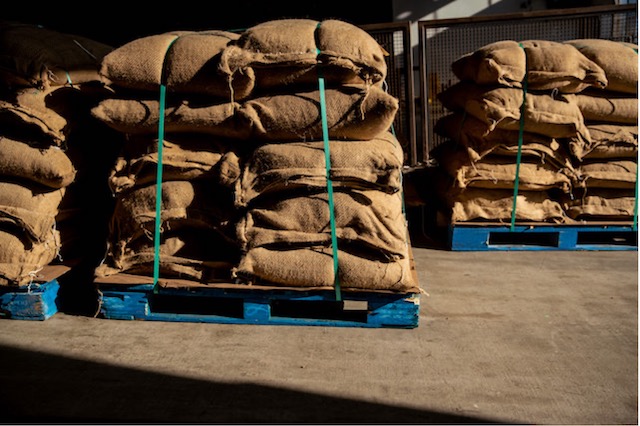It’s hard to miss all the news about labour shortages and health restrictions flooding our feeds these days. But issues in supply chain management are also taking a heavy toll on many small businesses.
The new reality has pushed business owners to adapt and find solutions to shortages and delays.
And while some businesses have had the misfortune of going under, others have managed to survive and even thrive during the pandemic. Wondering how? Below we’ll discuss some of the supply chain management tips that have kept many of them afloat.
Editor’s note: If you have a small business but no business website, now is definitely the time to get one. Build it yourself — truly no tech skills needed! — or let the pros at GoDaddy build one for you.
Tips for better supply chain management in 2022
Last year was particularly hard on small business owners who don’t have the same resources or corporate connections as big companies. But there’s still hope for the little players. Check out these tips to see how to respond to the global supply chain management challenges.
1. Fail, learn and adapt
The best mindset to bring to managing supply chain issues is resilience. While we have finished year No. 2 of this global pandemic, we can’t predict exactly what will happen next.
Anything that can go wrong will probably go wrong.
It’s important to remain vigilant and stay informed. Make sure to communicate with your employees and suppliers as problems arise. Some things to watch for, include:
- Government regulations and guideline updates
- Labour shortages news
- Port congestion and delays
- Bad weather
When failures do happen, remember to get back up and learn from your mistakes. You’ll be better equipped for future scenarios when you adapt.
Related: How to get your small business debt under control
2. Localize your resources
Many small business owners began localizing their suppliers during the COVID-19 pandemic. They did this to avoid vying for expensive spots on boats when importing.
Local sourcing offers a more permanent solution that could boost your bottom line.

While outsourcing materials and products from overseas can save money in a perfect scenario, the pandemic has created supply chain uncertainty. You don’t want to risk waiting around for delayed materials or products. It’s better to find suppliers locally to ensure your shipments arrive on time.
Related: 6 ways to pivot to sustainable sourcing
3. Use freight forwarders
It may not be possible in every case to localize. Some business may find that they still need to work overseas shipments into their supply chain management plan. This is where a good freight forwarding company can really come in handy.
Freight forwarders are shipment logistic companies that help small and large companies with overseas shipments.
They can help with things like:
- Setting up orders
- Tracking products
- Negotiating better rates and timing slots
Additionally, freight forwarders typically offer their clients online portals. This makes it easier to keep track of incoming orders and keeps everything organized in a digitized format.
Try investigating one or more freight forwarding companies to see how they can help ease your management worries.
4. Secure access to capital
A healthy cashflow and capital is essential in any scenario, but especially during a global pandemic. Many factories and warehouses are forced to stop or slow production due to outbreaks or labour shortages, which means getting your goods to Canada is getting more expensive.
In these cases, access to funding helps small businesses quickly pivot to alternative solutions within their supply chain management.
A flexible line of credit with a bank is essential for making quick decisions in times of need.
For example, you may find there’s a sudden rise in demand for one of your products. Having the extra funds available can help you fulfill and supply orders in a rush.
5. Track KPIs in your supply chain
Key performance indicators, also known as KPIs, are a measurement tool used to determine how well a business is accomplishing certain tasks.
In the context of supply chain management, tracking your KPIs starts with determining what success looks like for you. Small businesses can use KPIs to determine what their current process looks like and the areas they can improve on to reach their long-term goals.
Examples of supply chain KPIs are:
- Total number of shipments in a time period
- Capacity utilization
- Volume leveraging
- Task integration
- Rate competitiveness
- Percentage of on-time shipments
- Order accuracy
- Inventory accuracy
- Product damages
- Product returns
Small business owners can also use KPIs to see:
- Where there are opportunities to save money
- How they can better use the storage space they have
- How to integrate tasks to improve efficiency
- If they are getting the most competitive rates
Overall, KPIs can helps small business owners adapt and make better supply chain decisions in many ways.
Related: 4 free business intelligence tools
Examples of supply chain disruptions
Now let’s look at some of the disruptions business owners are facing in supply chain management. Take note of how they could affect your business and try to develop a game plan to stay ahead of the game.
Shipping woes
Many small businesses are facing shipment disruptions that affect imported materials and products. Some of these complications include:
- Competing for a freight shipment spot on boats
- Limited product availability
- Rising costs of shipping
- Shipping delays due to port congestion
Product delays don’t just affect customers, they affect how you do business as well. Think about key sales times like Valentine’s Day or the holiday shopping season. If you don’t have enough product to fill your shop, you might find yourself struggling to stay afloat with hardly anything to offer.
Additionally, the high rise of shipping costs can cut into profit margins and make it difficult to make money — even if there is product to sell.
Material shortages
Another issue in supply chain management is material shortages. Some small businesses have warehouses filled with product, but face shortages in materials like foam packing.
A shortage like this might mean that you can’t get products safely to stores or customers.

In this case, a business owner would need to:
- Find another supplier in a short amount of time
- Compete against other companies looking to localize their own materials
- Determine if they have enough cash flow to maintain growth
A huge amount of cash flow is often reserved for purchasing product and material scarcity can leave your small business in a vulnerable position. If you can’t keep up with demand, customers are likely turn to big box stores that can.
Demand forecasting
Another major challenge in supply chain management is demand forecasting.
Small businesses have had to shift their purchasing strategies throughout the course of the pandemic because things are always changing. This has led many business owners to ask themselves:
- How much of a certain product should I stock up on?
- Demand is high now, but will it be the same if we go back into another lockdown?
- Is my current inventory or service even possible to distribute?
These questions loom over entrepreneurs as they try to adapt through one of the worst crises in our lifetimes. It’s hard to predict what will happen next. But entrepreneurs will need to stay flexible and be intentional with their business’ demand to be successful.
A quick note on adapting to demand
If a certain product isn’t selling or you aren’t making enough money with your current profit margins, you’ll need to make some changes. Try finding new ways to sell off your current inventory and look for more profitable products that are rising in demand.

For example, the cosmetic industry has seen a huge dip in lip products lately. People don’t really need lipstick when they’re wearing a mask for much of the time. But other products, such as skincare and eye makeup, have maintained popularity – mostly due to work from home trends.
In a post-COVID world, it’s possible that lipstick trends will eventually make a comeback. But until then, many cosmetic brands will need to shift their strategy. This might mean stocking more skincare and eye makeup inventory and holding off on repurchasing products that just aren’t selling.
How to stay ahead of the game
Regardless of the challenges in supply chain management, we are still seeing small businesses adapt and thrive. It’s not easy, but it is possible.
While larger corporations may have an upper hand in resources, there are still advantages for small business facing supply chain management issues.
Many larger corporations have taken monopoly and priority in importing goods and raw materials. This has forced Canadian entrepreneurs to localize their materials and operations to save money on shipping in from overseas.
Many large corporations have contracts and stakeholder obligations to continue business as usual, but small businesses can pivot and change suppliers. Instead of waiting weeks and months on end for inventory, entrepreneurs are finding local suppliers just a short drive away.
Not only does this help solve supply chain issues, it builds local relationships for a more permanent shift to local sources.
Stay loose, stay flexible
While it’s hard to predict how the virus will develop in 2022 and beyond, small business owners have to remain resilient. You’ll need to keep an eye on how governments handle jurisdiction changes or if a certain ingredient suddenly becomes scarce.
Other areas to be aware of in supply chain management, include:
- Watching current trends in your industry market
- Communicating with stakeholders on problems and solutions
- Localizing your suppliers and diversifying where products come from
Remember, it’s important to stay on top of supply chain issues and adapt to better solutions. Planning ahead will help ensure your small business survives in challenging climates.





